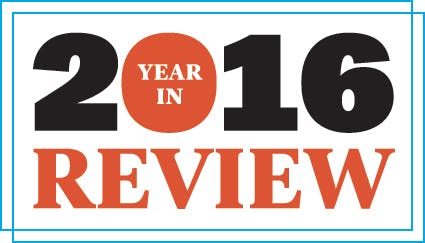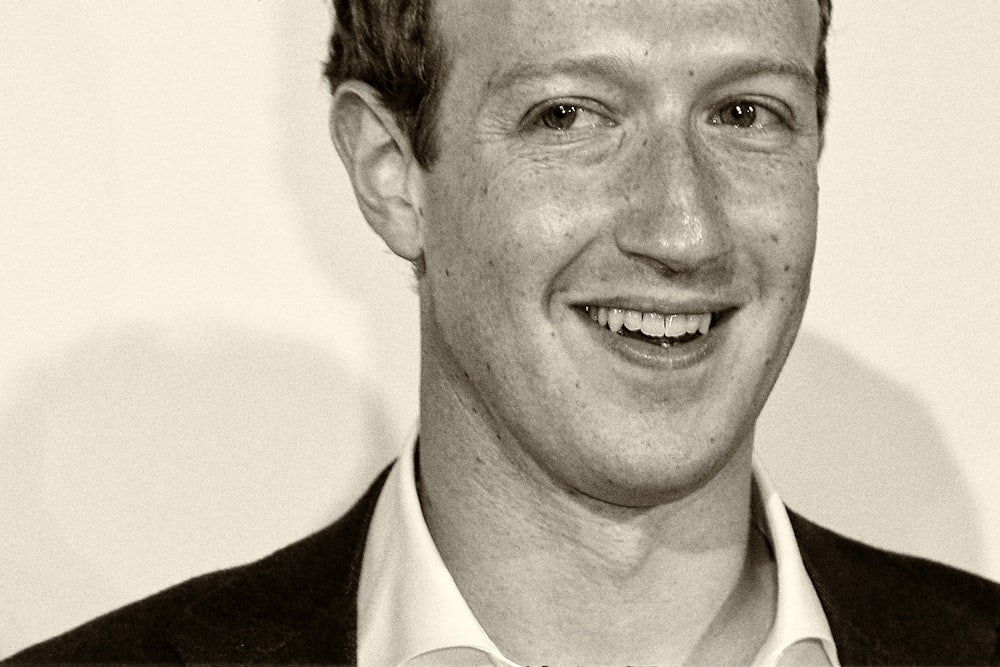
If a pattern can be discerned from the gory remains of this year’s bloodbath of online reorganization, reinvention, acquisition, layoffs, and fiscal “misses,” which claimed the jobs and (often worthless) stock options of so many reporters and editors, it is this: Clicks don’t pay the bills.
One early sign of trouble came last year, actually, with the shuttering of the tech blog Gigaom, a failure that The New York Times said portended a “flurry of contractions.” “It is a very dangerous time,” Gigaom founder Om Malik told the paper, before promptly joining a far safer enterprise: a VC firm, True Ventures, that believes in “building community” and “taking bold risks”—just not at media websites.
Then 2016’s falling of the big axe. The Guardian reduced its staff by 30 percent. Univision eliminated as many as 250 jobs, most of them at its Great Millennial Hope, Fusion. The Huffington Post laid off 38 people, Mashable dinged 30, the International Business Times wasted 20, and six content providers at Salon went into that good night. Al Jazeera America returned unto dust, as did Gawker. Yahoo sought a buyer for its news “assets.” Medium rethought its role as a “platisher”—that horrid portmanteau of platform and publisher—when it “spun off” Matter, its National Magazine Award–winning longform magazine “for a generation who grew up not caring about magazines,” and turned it into a “content studio that makes stuff.”
Each of these outlets produced different kinds of journalism, for different audiences, some of it vital and substantial, others less so. There are no easy comparisons to be made between Matter’s 10,000-word high-touch narratives and Fusion’s “Why spend $85 on a rock in a leather pouch when you can buy all of this great stuff for me instead?” approach to the world. Mashable slashed its staff shortly after winning a $15 million funding round. Al Jazeera America failed in part because of a drop in the global price of oil. Gawker died because it dared to expose the penis of a professional wrestler and offended a libertarian tech-oligarch. Hard to say why one thing rises while another falls.
But if there is one common thread between these ventures it is their dependence on digital advertising as a primary source of revenue. Advertisers pay web publishers on a CPM basis, or how many thousands of impressions a given ad receives. Unfortunately those clicks aren’t worth much, or at least not enough for everyone to keep their jobs. Who’s to blame? Why aren’t clicks worth more? Ad blockers, for one thing. What good is a click to an advertiser if the clicker isn’t forced to see an ad? Publishers lost $22 billion to ad blockers in 2015, according to PageFair, “the industry’s leading ad-blocking authority and solutions provider.” Things only got worse in 2016, when 300 million people actively used mobile ad-blocking browsers. Those ad blockers damaged the value of the click, and because the click providers (web publishers) don’t have reliable ways to make money other than by generating clicks, they proceeded to chase more clicks, even if the clicks aren’t worth enough to justify doing that, and even if the pursuit of clicks only further reduced their value. It’s a pickle.
The “platforms,” digital behemoths like Facebook and Google, haven’t made life any easier. “The transition from an internet of websites to an internet of mobile apps and social platforms, and Facebook in particular, is no longer coming. It is here,” John Herrman wrote in The New York Times in April. And with that arrival, digital publishers were plunged into a crisis. They still had to get clicks, but ever fewer people could be tempted to spend time on their sites, preferring instead to read and share on Facebook, which meant the value of the clicks dropped even more, which meant they had to get even more clicks. “2016 is a seminal moment in media business history,” said Rafat Ali, founder of the websites Skift and PaidContent. “The year where digital scale got exposed as a false proxy to actually building a real business.”
Digital advertising is actually pretty robust. In 2017, 33 percent of the world’s projected $547 billion in advertising will go to digital enterprises, according to GroupM, a global media investment management group. That’s 77 cents on every dollar. Television, by way of comparison, will get just 17 cents. So there’s plenty of money going online, just not to media websites. In the first quarter of 2016, Facebook and Google snagged 85 percent of all new online advertising spending.
So what to do? Pivot from what Ali called the “tyranny of scale”? Make way for the wondrous return of quality? The short answer is … no. Plenty of good journalism got made in 2016. The case could even be made that we live in a golden age of good journalism, with more of the good stuff being made by more good people dedicated to doing it good and getting paid to do it than ever before. Companies experimented with other revenue concepts, often successfully. Subscription models, like the ones offered by Business Insider and Politico, showed promise; we can expect to see more publishers trying this out. (Axios, the new subscription-based venture from Politico co-founder Jim VandeHei, will apparently be asking $10,000 per year of its members.) People kept branding content, or marketing it, or going native with it. But the click abides.
Indeed, while companies flirted with hip new revenue models, most merely redoubled their efforts to get more clicks, with help from the latest would-be click-savior: video. The layoffs at Mashable were part of a company-wide reorganization toward video. The New York Times created a team devoted just to Facebook Live video. Buzzfeed opened a “content arm” devoted to moving pictures, and led the way by entrancing the internet with the viral power of exploding fruit. “Everywhere you look, you can see news and media organizations devoting more resources to video,” Fortune declared in May. “The CPM or ‘cost per thousand impressions’ that advertisers are still willing to pay for video advertising looks like gold because on average it is more than 10 times what a site gets for a print-display CPM.”
Looks like gold is the key phrase here. People like video. They like to click it and they like to share it. No one denies this. But the money from video, while better, is still made in the same failed and self-defeating way as it is with text. The click. Always the click. It cannot be killed and it cannot be defeated. The only difference is that, for the moment, advertisers believe those video clicks are worth more than text clicks, and so they pay more for them. (And, for the moment, publishers believe it is in their interest to cater to Facebook users by putting their videos on Facebook, with no compensation in return.)
But that will not last forever. Why would it? Companies have already begun to question whether video clicks really are the best clicks. In September, Facebook apologized for having overestimated the average time its users spent watching videos by as much as 80 percent, according to The Wall Street Journal. So, it seems likely that as more companies pile into the video-making business, click value will inevitably decline. It’s not just Facebook’s trumped-up engagement. You simply cannot outrun the laws of supply and demand. “It’s a fool’s errand,” said Lucia Moses, senior editor at Digiday. “There will be a few winners and a lot of a casualties in the video space.”
The click is a byproduct and a symbol and a burden of decisions made years ago about the value of creative efforts online. Remember that first bite of Napster’s poisoned apple plucked from the Tree of Internet Knowledge, which taught us that no one need pay for music ever again. Ponder the lamentable debates over paywalls, metered, soft, or hard. And understand that if information could never quite be made free, it also couldn’t truly be made expensive, or even valuable.
